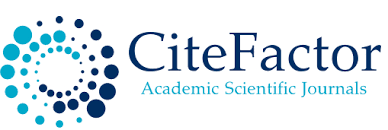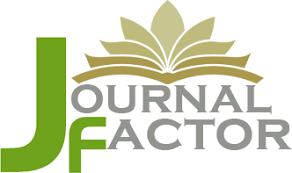Isolation and identification of Rhodococcus and their effi-cacy in bioremediation of heavy metals in biomedical waste ash
DOI:
https://doi.org/10.54361/ljmr.16202Keywords:
Biomedical waste ash, Cadmium, Heavy metals, Rhodococcus, TemperatureAbstract
Biomedical waste (BMW) ash from BMW incineration remains poses a serious threat to the ecosystem because it contains large amounts of toxic heavy metals, which are often disposed of in regular landfills or directly into the soil and can contaminate soil and groundwater. This study aimed to develop a bioremediation technique to re-move the toxicity of ash before disposing of it in landfills. Bacteria belonging to the Rhodococcus genus were used in this study; one species was isolated from soil contaminated with livestock remains and another species was isolated from an agricultural area in Sabha city. The degradation ability of the bacteria was tested by meas-uring the concentration of the heavy metals by Atomic Absorption Spectroscopy (AAS) at different ranges of temperatures (25,30,35°C) and exposure times (2,4,6 and 8 days). The bacteria proved their ability to degrade 85% of Cadmium. The best removal rate of Cadmium was at 35 ° C on the eighth day. Our findings revealed that the Rhodococcus genus bacteria have high efficiency in removing Cadmium from samples of BMW ash and could be used as a potential agent to treat heavy metals contamination efficiently and reduce the negative impact of BMW ash on the environment.
Downloads
References
M. M. Abd El-Salam, "Hospital waste management in El-Beheira governorate, Egypt," Journal of environmental manage-ment, vol. 91, no. 3, pp. 618-629, 2010.
M. Sawalem, E. Selic, and J.-D. Her-bell, "Hospital waste management in Libya: A case study," Waste Management, vol. 29, no. 4, pp. 1370-1375, 2009.
B. Heera, "treatment and metal char-acterization of biomedical waste ash, J," Waste Manage, no. 2014.
C. Li, K. Zhou, W. Qin, C. Tian, M. Qi, X. Yan, and W. Han, "A review on heavy metals contamination in soil: effects, sources, and remediation techniques," Soil and Sedi-ment Contamination: An International Jour-nal, vol. 28, no. 4, pp. 380-394, 2019.
J. Anitha and I. A. Jayraaj, "Isolation and identification of bacteria in biomedical wastes (BMW)," International journal of pharmacy and pharmaceutical sciences, vol. 4, no. 5, pp. 386-388, 2012.
B. Whitman, M. Goodfellow, P. Kämpfer, HJ. Busse, E. Trujillo , K-I. Suzuki and W. Ludwig,., Bergey's manual® of sys-tematic bacteriology: Volume five the actino-bacteria, part a. Springer,. 53(6): pp. 301-121.2012.
S. Aghaei, N. Bahador, and M. Bas-erisalehi, "Isolation and identification of bio-active compound producing Rhodococcus spp. isolated from soil samples," Internation-al Journal of Molecular and Clinical Microbi-ology, vol. 5, no. 1, pp. 463-468, 2015.
J. G. Cappuccino and C. T. Welsh, Mi-crobiology: a laboratory manual. Pearson Education, 11th pp.321-520. 2017.
R. Gorman and C. Adley, "An evalua-tion of five preservation techniques and con-ventional freezing temperatures of− 20° C and− 81° C for long‐term preservation of Campylobacter jejuni," Letters in applied mi-crobiology, vol. 38, no. 4, pp. 306-310, 2004.
U. Epa, "Ecological effects test guide-lines: seed germination/root elongation tox-icity test," 1996.
S. Al-Sahlany, "Isolation and Identifi-cation of Bacillus cereus Bacteria and Using in Polyhydroxybutyrate Production," Uni-versity of Barsah, 2015.
Y.-Q. Zhang et al., "Rhodococcus yunnanensis sp. nov., a mesophilic actino-bacterium isolated from forest soil," Interna-tional Journal of Systematic and Evolution-ary Microbiology, vol. 55, no. 3, pp. 1133-1137, 2005.
D. P. Samarth, C. J. Chandekar, and R. K. Bhadekar, "Biosorption of heavy metals from aqueous solution using Bacillus licheni-formis," International Journal of Pure and Applied Sciences and Technology, vol. 10, no. 2, p. 12, 2012.
M. Rostom, K. A. Selim, A. Diab, G. Safwat, and N. A. Ibrahim, "Biological Strat-egy for Heavy Metal Removal from Industri-al Wastewater, "Elixir International Journal ". vol. 130, pp, 53161-5316 .2019.
Downloads
Published
Issue
Section
License
Copyright (c) 2022 Hanan S. Wees, Marwa A. Hasan, Huda S. Alrawiq (Author)

This work is licensed under a Creative Commons Attribution-NonCommercial-NoDerivatives 4.0 International License.
Open Access Policy
Libyan journal of medical Research (LJMR).is an open journal, therefore there are no fees required for downloading any publication from the journal website by authors, readers, and institution.
The journal applies the license of CC BY (a Creative Commons Attribution 4.0 International license). This license allows authors to keep ownership f the copyright of their papers. But this license permits any user to download , print out, extract, reuse, archive, and distribute the article, so long as appropriate credit is given to the authors and the source of the work.
The license ensures that the article will be available as widely as possible and that the article can be included in any scientific archive.
Editorial Policy
The publication of an article in a peer reviewed journal is an essential model for Libyan journal of medical Research (LJMR). It is necessary to agree upon standards of expected ethical behavior for all parties involved in the act of publishing: the author, the journal editorial, the peer reviewer and the publisher.
Any manuscript or substantial parts of it, submitted to the journal must not be under consideration by any other journal. In general, the manuscript should not have already been published in any journal or other citable form, although it may have been deposited on a preprint server. Authors are required to ensure that no material submitted as part of a manuscript infringes existing copyrights, or the rights of a third party.
Authorship Policy
The manuscript authorship should be limited to those who have made a significant contribution and intellectual input to the research submitted to the journal, including design, performance, interpretation of the reported study, and writing the manuscript. All those who have made significant contributions should be listed as co-authors.
Others who have participated in certain substantive aspects of the manuscript but without intellectual input should only be recognized in the acknowledgements section of the manuscript. Also, one of the authors should be selected as the corresponding author to communicate with the journal and approve the final version of the manuscript for publication in the LJMR.
Peer-review Policy
- All the manuscripts submitted to LJMR will be subjected to the double-blinded peer-review process;
- The manuscript will be reviewed by two suitable experts in the respective subject area.
- Reports of all the reviewers will be considered while deciding on acceptance/revision or rejection of a manuscript.
- Editor-In-Chief will make the final decision, based on the reviewer’s comments.
- Editor-In-Chief can ask one or more advisory board members for their suggestions upon a manuscript, before making the final decision.
- Associate editor and review editors provide administrative support to maintain the integrity of the peer-review process.
- In case, authors challenge the editor’s negative decision with suitable arguments, the manuscript can be sent to one more reviewer and the final decision will be made based upon his recommendations.











